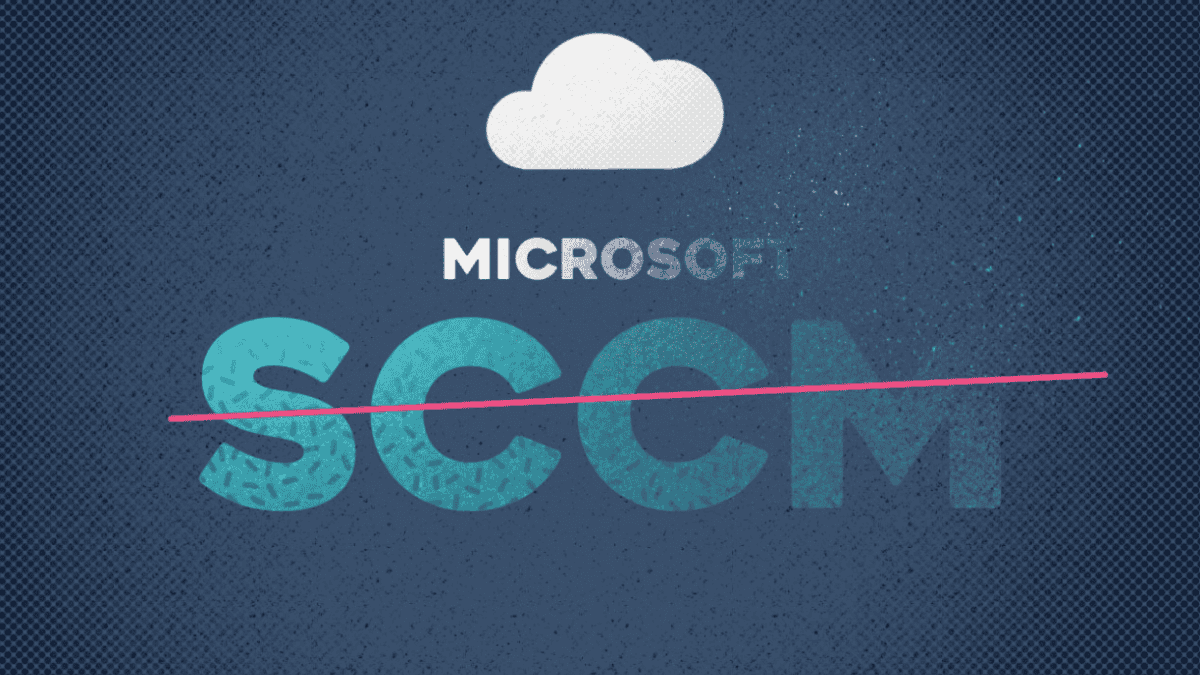System Center Configuration Manager (SCCM) is a robust tool designed for managing systems and devices within an organization. It enables IT administrators to oversee infrastructure, software, and security settings on computers connected to a network. What is IT support often begins with tools like SCCM, which provide a centralized platform that simplifies tasks such as software deployment, updates, and compliance management.
The central role of SCCM in IT management allows organizations to enhance system performance and stability. By automating various processes, SCCM reduces the burden on IT staff and minimizes the potential for human error. This tool is particularly crucial for organizations looking to maintain a compliant and secure IT environment.
Importance of SCCM Administration
Effective SCCM administration is vital for businesses aiming to optimize their IT operations. It ensures that systems are maintained efficiently, allowing IT teams to respond quickly to any underlying issues. Several key points highlight the significance of SCCM administration:
| Aspect | Description |
| Centralized Control | Provides a unified interface for managing multiple devices and software applications across the organization. |
| Increased Efficiency | Automates routine tasks, enabling IT staff to focus on strategic initiatives rather than manual processes. |
| Compliance Management | Helps organizations meet industry regulations and standards by ensuring that systems are consistently updated and secure. |
| Cost-Effective Solutions | Streamlines resource allocation, potentially leading to reduced IT expenditure due to improved system performance and management. |
| Enhanced Security | Facilitates endpoint protection and vulnerability management, safeguarding sensitive data from breaches. |
Organizations that implement effective SCCM administration practices can harness the power of their IT infrastructure, ultimately leading to improved productivity and operational success.
3 Core Functions of SCCM Administration
SCCM administration encompasses various core functions that significantly enhance IT management in organizations. These include software deployment and updates, endpoint protection, and inventory management.
Software Deployment and Updates
One of the primary functions of SCCM administration is the streamlined software deployment and update process. This capability enables IT administrators to efficiently manage software across multiple devices within an organization. This includes the deployment of operating systems, applications, and service packs.
Through scheduled updates, administrators can ensure that all devices are running the latest software versions, which helps maintain security and system integrity.
Endpoint Protection
Another crucial aspect of SCCM administration is endpoint protection. This function includes managing security features to safeguard organization devices against unauthorized access and potential threats. Through SCCM, IT teams can enforce security policies and deploy antivirus solutions.
Endpoint protection encompasses real-time monitoring and threat detection, regular software updates for security applications, and centralized reporting for tracking security incidents.
Inventory Management
SCCM administration also includes comprehensive inventory management capabilities. This functionality allows organizations to keep track of hardware and software assets within their IT environment. Administrators can generate reports detailing software installations, hardware configurations, and compliance status.
Accurate inventory management is essential for ensuring effective resource allocation, auditing, and compliance with licensing agreements.
The core functions of SCCM administration play a vital role in optimizing IT management processes, ensuring security, and maintaining an organized overview of an organization's IT assets. Similarly, having a solid understanding of network protocols and configurations is essential to keeping systems running smoothly—just like we explore in our article What is DHCP Configuration and How Does It Work?
10 Benefits of SCCM Administration
SCCM administration offers numerous advantages that can significantly enhance IT management for small and medium enterprises (SMEs).

1. Centralized Management
SCCM allows IT administrators to manage all devices, applications, and updates from a single interface. This centralized approach improves efficiency and reduces administrative overhead.
2. Automated Patch Management
With SCCM, you can automate the deployment of security patches and updates, ensuring systems remain secure and compliant with minimal manual intervention.
3. Hardware and Software Inventory
SCCM provides detailed reports on hardware and software assets across the network. This visibility helps with capacity planning, compliance, and license management.
4. Remote Control and Troubleshooting
Administrators can remotely access and troubleshoot client machines, reducing downtime and the need for on-site support.
5. Software Deployment
SCCM enables the automated deployment of applications and software packages across the organization, simplifying the installation process and ensuring consistency.
6. Operating System Deployment
SCCM streamlines OS deployment by allowing automated, unattended installations and system imaging, making new device setups faster and more consistent.
7. Compliance and Configuration Management
SCCM ensures that all devices meet organizational compliance standards by monitoring configurations and enforcing security baselines.
8. Scalability for Growing Businesses
SCCM is highly scalable, allowing SMEs to expand their IT infrastructure without outgrowing their management tools.
9. Integration with Microsoft Ecosystem
Being part of the Microsoft suite, SCCM integrates seamlessly with tools like Active Directory, Azure, and Intune, enhancing overall IT operations.
10. Enhanced Security Controls
Through SCCM, administrators can manage endpoint protection, firewall settings, and encryption policies, strengthening the organization’s security posture.
Leveraging the benefits of SCCM administration, SMEs can achieve greater operational efficiency, enhanced security, and streamlined IT management processes.
Implementation of SCCM Administration
Successful implementation of SCCM administration involves two key phases: planning and preparation, followed by deployment and configuration. Each of these phases is crucial for ensuring the system operates efficiently and provides maximum benefits to the organization.
Planning and Preparation
Effective planning and preparation are vital for a smooth SCCM implementation. Organizations should assess their existing infrastructure and define their specific needs and objectives. A detailed plan helps set clear expectations and lays the groundwork for a successful deployment.
Key Considerations for Planning
| Consideration | Description |
| Assessment of Current Infrastructure | Review existing hardware, software, and network capabilities. |
| Defining Goals | Establish precise objectives for SCCM deployment, such as software updates, inventory management, or endpoint security. |
| Resource Allocation | Identify and allocate necessary technical resources and personnel to manage the implementation process. |
Deployment and Configuration
Once planning is complete, the deployment and configuration process can begin. This phase involves setting up the SCCM environment and customizing it according to the organization's requirements.
Steps for Deployment
| Step | Description |
| Installing SCCM Server | Set up the SCCM primary site server based on the planned architecture. |
| Configuring Database | Establish the configuration for the SCCM database to manage stored data efficiently. |
| Client Installation | Deploy the SCCM client on target devices to enable management capabilities. |
Configuration Options
Several configuration settings should be tailored to fit the specific needs of the organization. These might include:
| Configuration Option | Description |
| Site Settings | Define configurations for site boundaries, security roles, and site systems. |
| Software Deployment Settings | Set parameters for packaging, distributing, and scheduling software updates. |
| Endpoint Protection Configurations | Customize security policies to protect devices within the network. |
Effective planning and thorough configuration are essential components of SCCM administration. Through careful consideration and structured implementation, organizations can maximize the advantages of this powerful IT management tool.
Scalability and Future Growth with SCCM Administration
SCCM administration offers flexibility and adaptability, making it a suitable choice for small and medium enterprises (SMEs) looking to optimize their IT management. As businesses evolve, SCCM can meet changing demands and embrace new technology trends.
Meeting Changing Needs
As organizations expand, their IT requirements become more complex. SCCM administration provides a scalable solution that grows alongside the business. This scalability allows IT teams to manage increasing numbers of devices, users, and applications without sacrificing performance or security.
SCCM administration allows for customized configurations that can be adjusted based on the organization’s needs. This adaptability enables IT departments to respond quickly to changes, such as implementing new software or managing increased cybersecurity risks.

Adapting to Technological Advancements
The landscape of IT is ever-changing, with frequent advancements in technology. SCCM administration is designed to integrate seamlessly with emerging technologies, allowing organizations to stay current without overhauling their systems.
Build What’s Next. We’ll Power It — LK Tech
SCCM administration ensures that IT services can align with innovations, enabling organizations to leverage cutting-edge solutions while maintaining operational efficiency. Proactive adaptation to technological trends empowers SMEs to remain competitive in a fast-paced market. At LK Tech, we deliver top-notch IT support tailored to your unique needs, helping businesses stay ahead with reliable systems and expert guidance every step of the way.
We proudly serve a wide range of clients, including those searching for dependable Cincinnati IT companies. Let us help you streamline your IT infrastructure—contact us today to get started.


